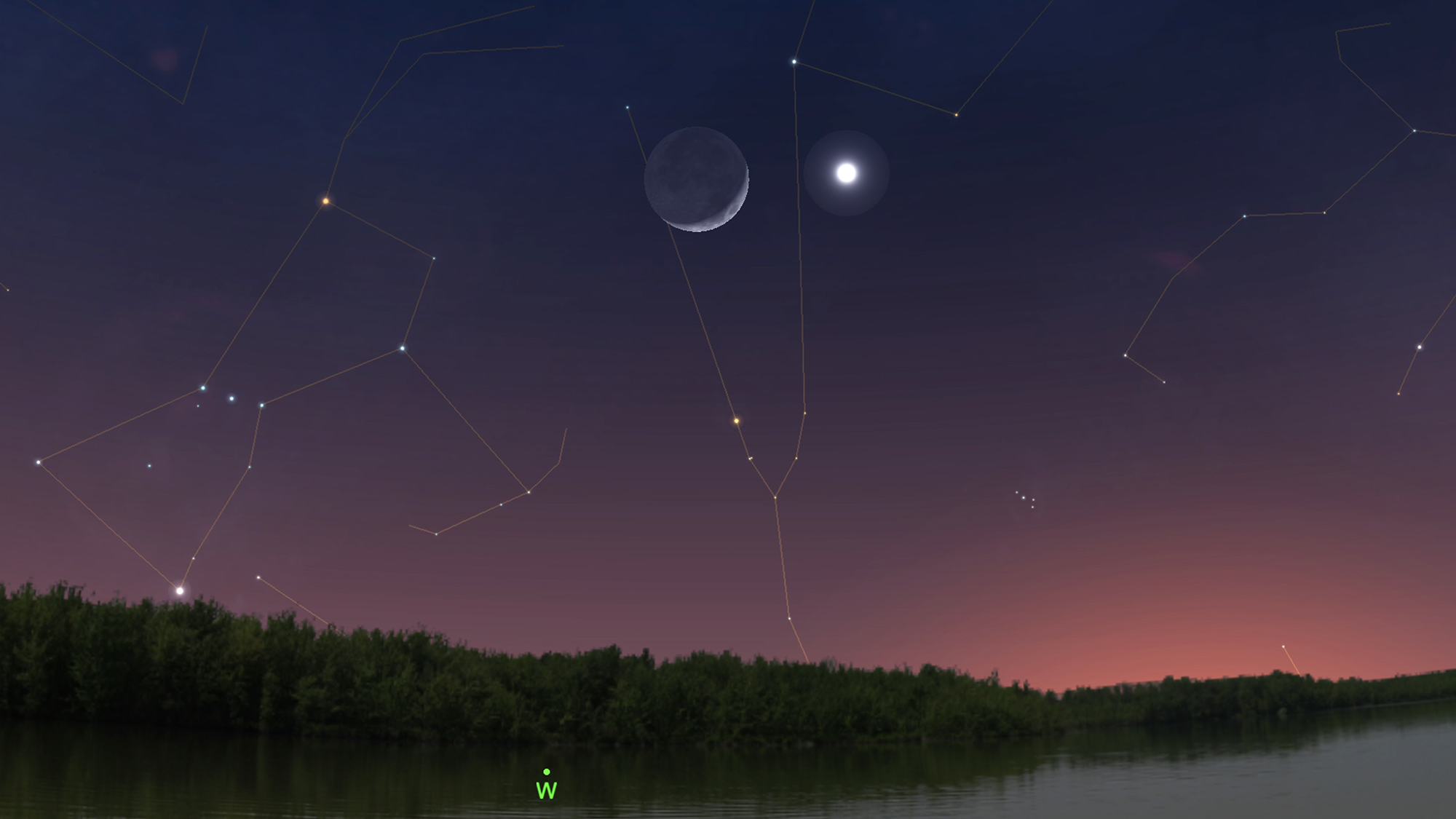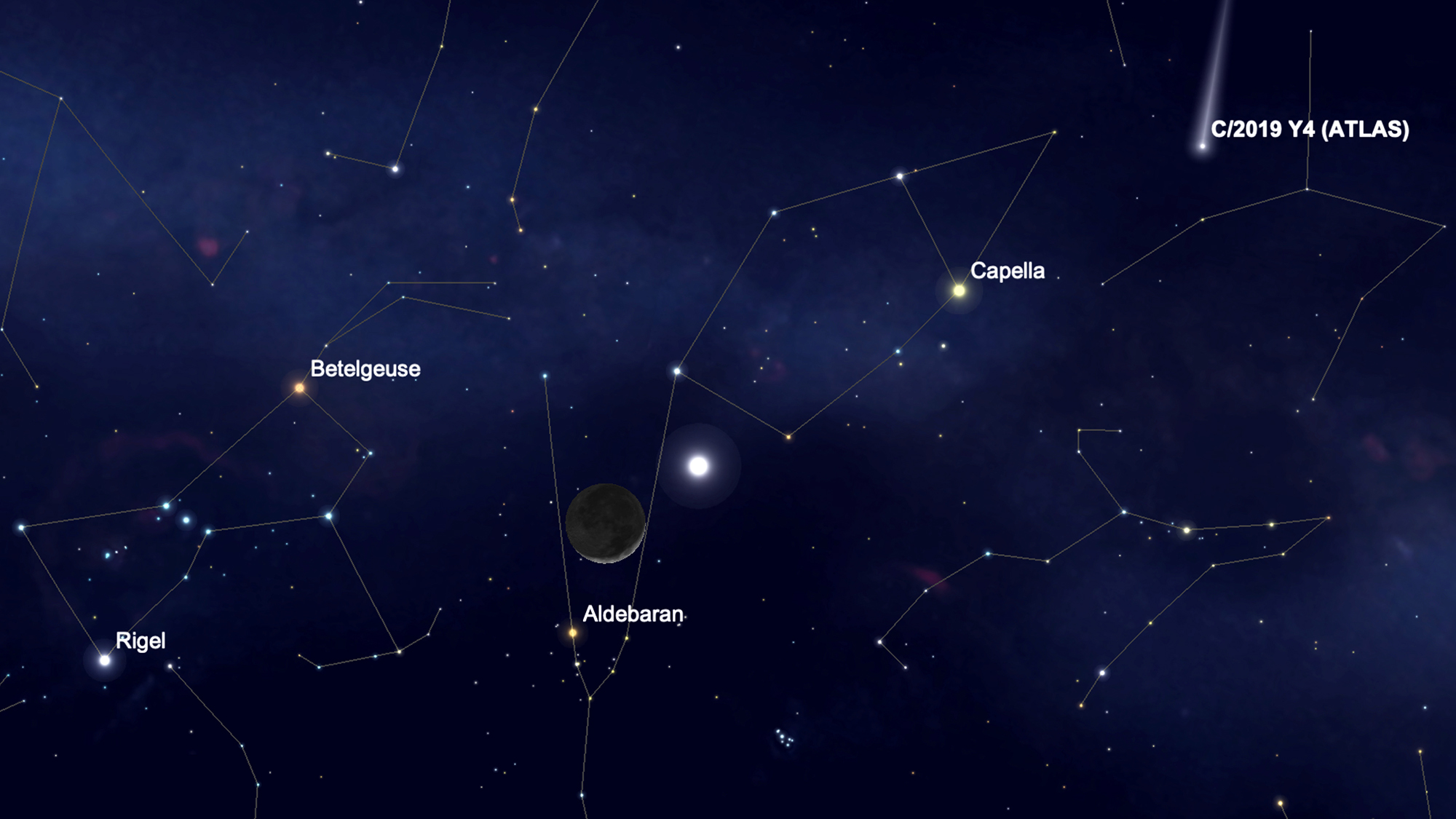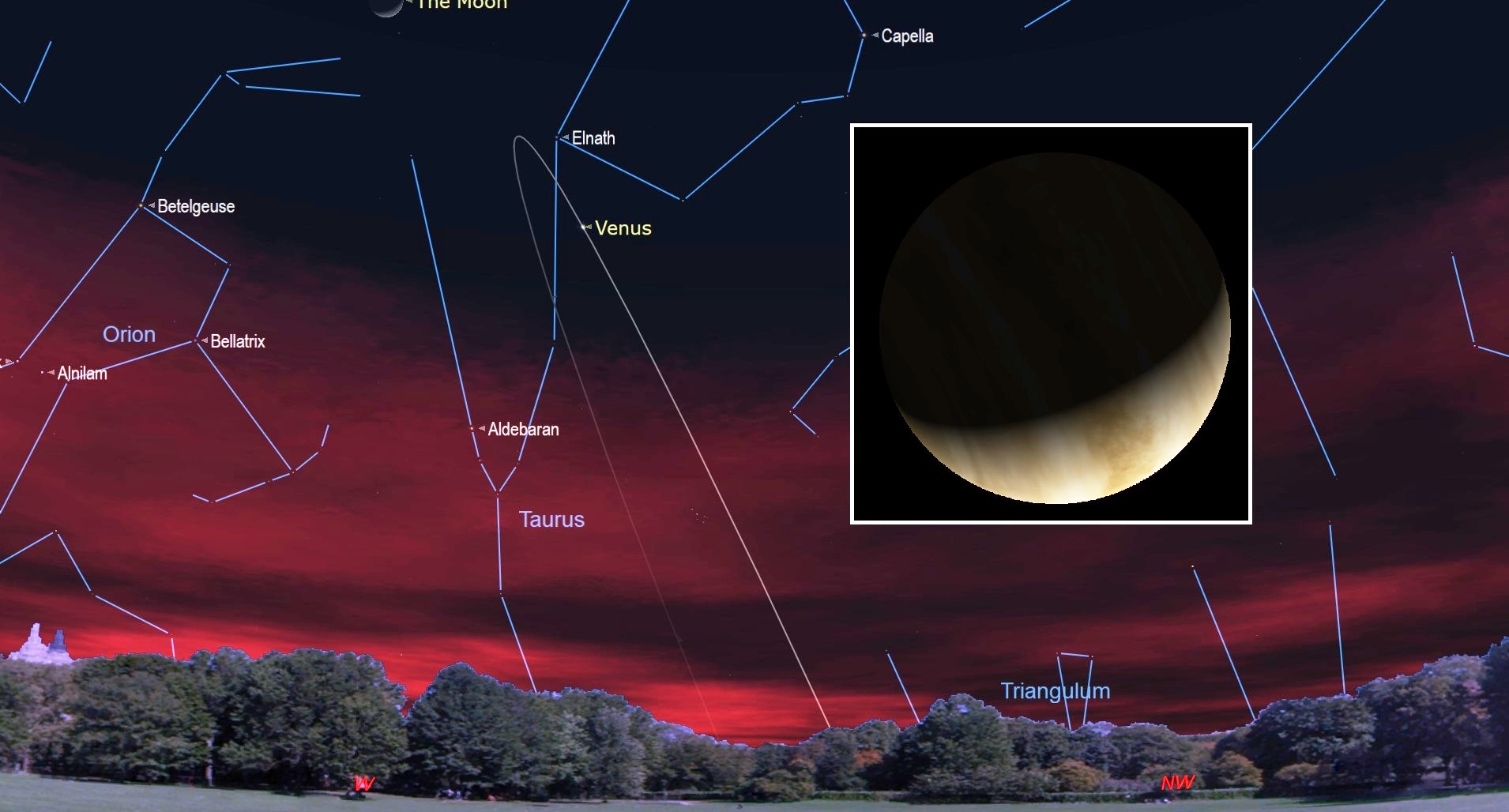See the bright 'evening star' Venus swing by the crescent moon tonight
After a close encounter with the moon on Sunday (April 26), Venus will be at its greatest brightness of the year on Tuesday (April 28).

The bright "evening star" Venus will be hard to miss this week, as the planet reaches its greatest brightness of the year on Tuesday (April 28). But first the planet will make a close approach to the crescent moon.
Today (April 26) the waxing crescent moon will be in conjunction with Venus, meaning the objects share the same celestial longitude and will appear close together in the sky.
Related: Moon phases
The moment of conjunction occurs at 11:23 a.m. EDT (1523 GMT), and you can spot them above the southwestern horizon after sunset. The moon will be about 6 degrees south of Venus in the constellation of Taurus, the bull.
Related: April is the month of Venus! See the 'evening star' at its brightest
Although the conjunction occurs during the daytime, when most celestial objects are rendered invisible by sunlight, Venus is so bright that you can actually see it in broad daylight — if you know where to look. But the pair will be much easier to see once the dusk fades. Venus, which rises a couple hours after sunrise, will set tonight at 11:28 p.m. local time in New York City, just four minutes before the moon sets, according to timeanddate.com.
After its close encounter with the moon tonight, Venus will continue to grow even brighter for the next two days until it reaches its greatest brightness of the year on Tuesday (April 28).
Get the Space.com Newsletter
Breaking space news, the latest updates on rocket launches, skywatching events and more!

At its brightest, the planet will be shining at a magnitude of -4.7. (Magnitude is a measurement of brightness used by astronomers, with lower numbers denoting brighter objects. Negative numbers denote exceptionally bright objects.)
Venus is currently the second-brightest object in the night sky, second only to the moon. On Tuesday night the planet will appear to shine more than nine times brighter than its brightest planetary competitor, Jupiter, and it will outshine Sirius, the brightest star in Earth's night sky, by at least 20-fold.
After this week, the bright "evening star" will slowly start to dim again before the planet disappears in the sun's glare at the end of May. It will reappear in early June as a "morning star."

- Examining the phases of Venus
- What is a 'morning star,' and what is an 'evening star'?
- The 10 weirdest facts about Venus
Email Hanneke Weitering at hweitering@space.com or follow her @hannekescience. Follow us on Twitter @Spacedotcom and on Facebook.
OFFER: Save 45% on 'All About Space' 'How it Works' and 'All About History'!
For a limited time, you can take out a digital subscription to any of our best-selling science magazines for just $2.38 per month, or 45% off the standard price for the first three months.
Join our Space Forums to keep talking space on the latest missions, night sky and more! And if you have a news tip, correction or comment, let us know at: community@space.com.

Hanneke Weitering is a multimedia journalist in the Pacific Northwest reporting on the future of aviation at FutureFlight.aero and Aviation International News and was previously the Editor for Spaceflight and Astronomy news here at Space.com. As an editor with over 10 years of experience in science journalism she has previously written for Scholastic Classroom Magazines, MedPage Today and The Joint Institute for Computational Sciences at Oak Ridge National Laboratory. After studying physics at the University of Tennessee in her hometown of Knoxville, she earned her graduate degree in Science, Health and Environmental Reporting (SHERP) from New York University. Hanneke joined the Space.com team in 2016 as a staff writer and producer, covering topics including spaceflight and astronomy. She currently lives in Seattle, home of the Space Needle, with her cat and two snakes. In her spare time, Hanneke enjoys exploring the Rocky Mountains, basking in nature and looking for dark skies to gaze at the cosmos.

